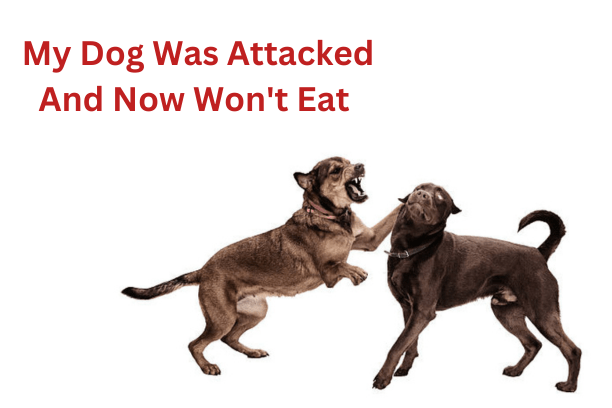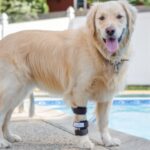Many dog owners love their pets as if they were family members, and they would do anything to protect them from harm. However, sometimes accidents happen, and dogs may get attacked by other animals or dogs. this can be a very traumatic experience for both the dog and the owner.
If you face a situation like my dog was attacked and now won’t eat it can have lasting effects on the dog’s physical and emotional health. One of the most common problems that can arise after a dog attack is a loss of appetite.
This can be very concerning, as dogs need proper nutrition to heal and recover from their injuries. In this article, we will explore some of the possible causes and solutions for a dog that won’t eat after being attacked.
Contents
- 1 How to Help Your Dog Recover After a Dog Attack
- 2 Why Your Dog May Not Be Eating After a Dog Attack
- 3 How to Help Your Dog Regains Its Appetite and Recover from the Trauma
- 4 What are some common types of dog attacks?
- 5 How can I prevent my dog from being attacked?
- 6 How Dogs Act After Being Attacked
- 7 Conclusion
- 8 FAQs about My dog was attacked and now won’t eat
How to Help Your Dog Recover After a Dog Attack
If your dog has been attacked by another dog, you may be dealing with a lot of emotions and worries that feel scary. You may be angry at the other dog or its owner, scared for your dog’s safety, or sad to see your dog in pain. You may also be wondering how to help your dog recover physically and emotionally after the attack.
One of the most common issues that can arise after a dog attack is a loss of appetite. Your dog may refuse to eat or drink due to stress, anxiety, fear, pain, or discomfort. This can be very concerning, as your dog needs proper nutrition and hydration to heal and stay healthy.
In this article, we will explain why your dog may not be eating after a dog attack, how to recognize the signs of loss of appetite, and what you can do to help your dog regain its appetite and recover from the trauma.
Why Your Dog May Not Be Eating After a Dog Attack
There are many possible reasons a dog was attacked and now won’t eat anything. Some of the most common ones are
- Stress and anxiety. A dog attack can be a very stressful and traumatic event for your dog. Your dog may experience a surge of adrenaline and cortisol, the hormones that regulate the fight-or-flight response. These hormones can suppress your dog’s appetite and make it less interested in food. Your dog may also develop anxiety or fear related to the attack, such as being afraid of other dogs, people, or places that remind it of the attack. Anxiety can also affect your dog’s appetite and digestion.
- Pain and discomfort. A dog attack can cause physical injuries to your dog, such as puncture wounds, lacerations, bruises, swelling, or joint damage. These injuries can cause pain and discomfort to your dog, especially when eating or drinking. Your dog may avoid eating or drinking to avoid aggravating its wounds or feeling more pain. Your dog may also have difficulty chewing or swallowing due to injuries to its mouth, throat, or jaw.
- Medication side effects. If your dog has been treated by a veterinarian after the attack, it may have been prescribed some medications to help with the pain, inflammation, or infection. Some of these medications, such as antibiotics, anti-inflammatories, or opioids, can have side effects that affect your dog’s appetite. For example, some medications can cause nausea, vomiting, diarrhea, or constipation, which can make your dog feel sick or uncomfortable and reduce its desire to eat.
- Underlying health conditions. In some cases, a loss of appetite after a dog attack can be a sign of a more serious health problem, such as an infection, organ failure, or cancer. A dog attack can weaken your dog’s immune system and make it more susceptible to infections or diseases. If your dog has been attacked and is not eating, it is important to take it to the veterinarian for a thorough examination and diagnosis.
- Physical signs. You may notice that your dog is losing weight, has a dull coat, or has dry or pale gums. You may also see that your dog’s food bowl is untouched or that your dog is leaving food behind. You may also notice that your dog is drinking less water or urinating less frequently.
- Behavioral changes. You may notice that your dog is less energetic, playful, or interested in its surroundings. Your dog may also show signs of depression, such as sleeping more, hiding, or avoiding you. The dog was attacked and now is aggressive. Your dog may also become more irritable, or vocal, especially when approached or offered food.
If you notice any of these signs, you should monitor your dog’s food intake and consult your veterinarian as soon as possible.
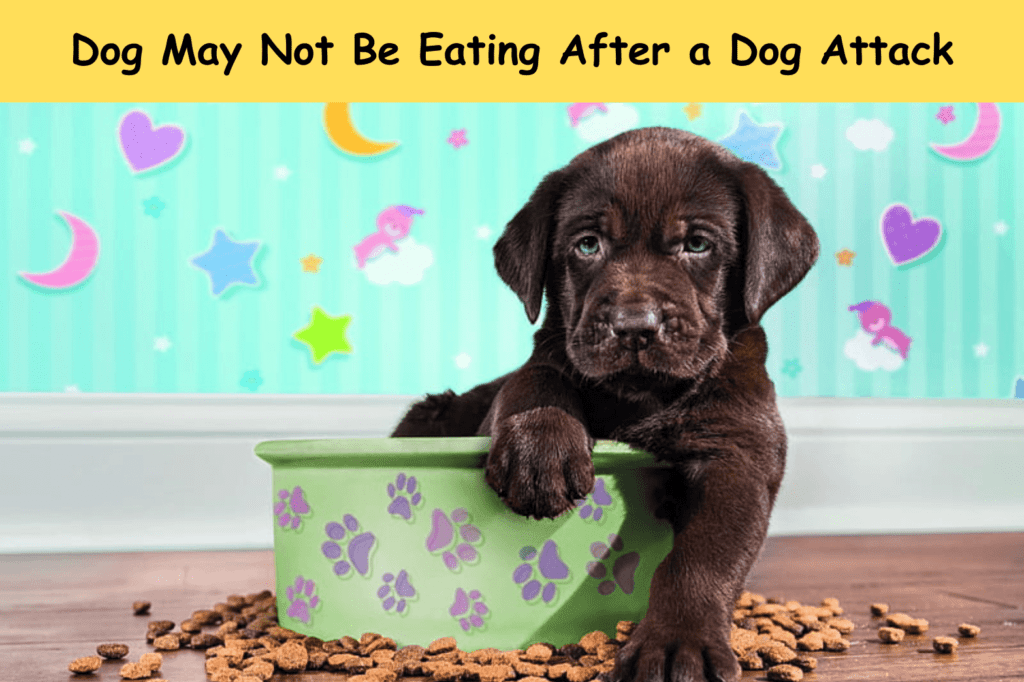
How to Help Your Dog Regains Its Appetite and Recover from the Trauma
My dog was attacked and now won’t eat. In this situation, you should not force it to eat or punish it for not eating. This can make your dog more stressed and anxious and worsen the situation. Instead, you should try to make your dog feel safe, comfortable, and loved, and offer it some incentives to eat. Here are some tips to help your dog regain its appetite and recover from the trauma:
Helpful to Understand Dog Behavior:
Why Is My Dog Obsessed with My Belly Button?
How to Recognize the Signs of Loss of Appetite in Your Dog
Loss of appetite in dogs can be hard to notice, especially if your dog is normally a picky eater or has a variable eating schedule. However, some signs can indicate that your dog is not eating enough or at all. Some of the signs are:
- Offer your dog a bland diet. A bland diet consists of easily digestible foods that are gentle on your dog’s stomach and intestines. Some examples of bland foods are boiled chicken, rice, or plain yogurt. You can offer your dog a small amount of bland food several times a day, and gradually increase the portion and frequency as your dog’s appetite improves. You can also add some chicken broth or warm water to the food to make it more appealing and hydrating for your dog.
- Try different foods and flavors. If your dog is not interested in its usual food, you can try to entice it with some different foods and flavors. You can offer your dog some of its favorite treats, such as cheese, peanut butter, or cooked eggs. You can also try some new foods, such as canned dog food, wet food, or human food, as long as they are safe and healthy for your dog. You can also add some herbs or spices, such as parsley, oregano, or turmeric, to your dog’s food to enhance the flavor and aroma. However, you should avoid foods that are toxic or harmful to your dog, such as chocolate, grapes, onions, garlic, or xylitol.
- Feed your dog by hand or use a puzzle feeder. Sometimes, your dog may not want to eat from its food bowl, either because it associates it with the attack or because it is bored or depressed. You can try to feed your dog by hand, which can help to create a bond and trust between you and your dog. You can also use a puzzle feeder, which is a toy that dispenses food as your dog plays with it. This can help to stimulate your dog’s brain and curiosity and make eating more fun and rewarding for your dog.
- Reduce stress and anxiety in your dog. Stress and anxiety can be major factors that affect your dog’s appetite and recovery. You should try to reduce stress and anxiety in your dog by providing it with a calm and comfortable environment. You can also use some natural remedies, such as lavender, chamomile, or CBD oil, to help your dog relax and cope with the trauma. You can also play soothing music, such as classical or ambient music, to help your dog feel more at ease. You should also avoid exposing your dog to situations that may trigger its fear or anxiety, such as loud noises, crowds, or other dogs until your dog is fully recovered and confident.
- Seek professional help. If your dog’s loss of appetite persists or worsens, you should seek professional help from your veterinarian. Your veterinarian can perform a physical examination and run some tests to determine the cause and severity of your dog’s loss of appetite. Your veterinarian can also prescribe some medications or supplements to help your dog with the pain, inflammation, infection, or other health issues. Your veterinarian can also refer you to a dog trainer or behaviorist, who can help you with the emotional and behavioral aspects of your dog’s recovery. A dog trainer or behaviorist can help you with some training techniques, such as desensitization, counterconditioning, or positive reinforcement, to help your dog overcome its fear or anxiety and regain its confidence and happiness.
What are some common types of dog attacks?
- Dog fights. This is when two or more dogs engage in a violent confrontation, usually over territory, dominance, or resources. Dog fights can result in serious injuries or death for the dogs involved, as well as for any humans who try to intervene. Dog fights can be triggered by various factors, such as lack of socialization, poor training, or hormonal changes. Some breeds, such as Pitbulls, Rottweilers, or German Shepherds, are more prone to dog fights than others.
- Accidents. This is when a dog unintentionally bites or attacks someone or another animal, usually due to fear, pain, or surprise. Accidents can happen when a dog is startled, injured, or threatened by something or someone. For example, a dog may bite a child who pulls its tail, a cyclist who passes by too fast, or a stranger who approaches too quickly. Accidents can also happen when a dog is poorly trained, unsupervised, or off-leash.
- Abuse. This is when a dog bites or attacks a person or another animal intentionally, usually due to anger, frustration, or cruelty. Abuse can happen when a dog is mistreated, neglected, or exploited by its owner or someone else. For example, a dog may bite or attack a person who hits, kicks, or starves it, or forces it to fight or perform. Abuse can also happen when a dog is exposed to violence, stress, or trauma, which can affect its mental and emotional health.
- Territorial disputes. This is when a dog bites or attacks a person or another animal who enters or approaches its territory, usually to protect its home, family, or belongings. Territorial disputes can happen when a dog is guarding its property, food, toys, or mates, or when it perceives a threat or challenge from an intruder. Territorial disputes can also happen when a dog is not familiar with the boundaries or rules of its environment, such as a new home, a park, or a neighbor’s yard.
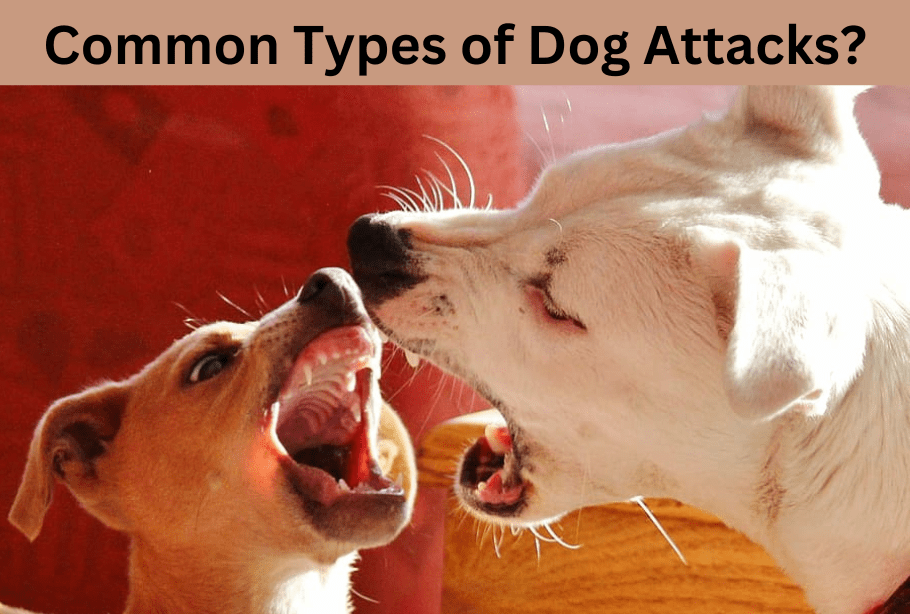
How can I prevent my dog from being attacked?
- Walk at times and places where there are other dog owners around. This can deter aggressive dogs from approaching your dog, and also provide you with assistance or witnesses in case of an attack.
- Avoid unknown or unsafe places, especially on your own. Some places, such as alleys, parks, or trails, may have stray dogs, wild animals, or irresponsible dog owners who may pose a threat to your dog. Try to walk your dog in familiar and well-lit areas, and avoid walking your dog at night or in bad weather.
- Consider owning a wearable camera or a phone with a camera. This can help you record any incidents of dog attacks and also serve as a deterrent or evidence for legal or insurance purposes.
- Offer help to other dog owners even for minor attacks. If you witness another dog being attacked, you can try to intervene or call for help, as long as it is safe for you and your dog. This can prevent the situation from escalating or repeating, and also create a sense of community and responsibility among dog owners.
- It’s illegal to carry a weapon, but you could have a sonic device or a bright light. These devices can emit a loud noise or a bright flash that can startle or scare away an attacking dog, without harming them or your dog. However, you should use these devices with caution, as they may also provoke or aggravate some dogs.
- Call out bad owner behavior, especially in dog parks. If you see a dog owner who is not following the rules, such as not leashing their dog, not picking up their dog’s waste, or not supervising their dog, you can politely remind them or report them to the authorities. This can prevent conflicts or accidents that may lead to dog attacks.
How Dogs Act After Being Attacked
- Explain that dog attacks are traumatic events that can affect a dog’s physical and emotional health.
- Mention some common causes and scenarios of dog attacks, such as dog fights, accidents, abuse, or territorial disputes.
- State the main purpose of the article, which is to describe how dogs act after being attacked and what owners can do to help them recover.
Signs and Symptoms of Dog Trauma
- Discuss some of the signs and symptoms that may indicate that a dog has been traumatized by an attack, such as
- Physical signs, such as wounds, bleeding, limping, or shaking.
- Behavioral changes, such as aggression, fear, anxiety, depression, or avoidance.
- Emotional changes, such as loss of appetite, sleep problems, or reduced interest in play or socialization.
- Emphasize the importance of seeking veterinary care as soon as possible after an attack, as some injuries or infections may not be visible or may worsen over time.
Factors That Influence Dog Trauma
- Explain that not all dogs react the same way to an attack and that some factors may influence how a dog acts after being attacked, such as
- The severity and duration of the attack.
- The relationship and history between the dogs involved.
- The personality and temperament of the dog.
- The presence and support of the owner or other people.
- The environment and context of the attack.
Tips and Strategies to Help a Dog Recover from Trauma
- Provide some practical and effective tips and strategies to help a dog recover from trauma, such as:
- Provide physical and emotional comfort and security to the dog, such as cuddling, petting, or talking to them.
- Follow the veterinarian’s instructions and recommendations for wound care, medication, or therapy.
- Monitor the dog’s behavior and mood, and report any changes or concerns to the veterinarian.
- Avoid exposing the dog to situations or stimuli that may trigger or remind them of the attack, such as loud noises, crowds, or other dogs, until they are fully recovered and confident.
- Gradually reintroduce the dog to normal activities and routines, such as walks, play, or socialization, and reward them for positive behavior and progress.
- Seek professional help from a dog trainer or behaviorist, if the dog shows signs of persistent or severe trauma, such as phobias, aggression, or depression, that interfere with their quality of life.
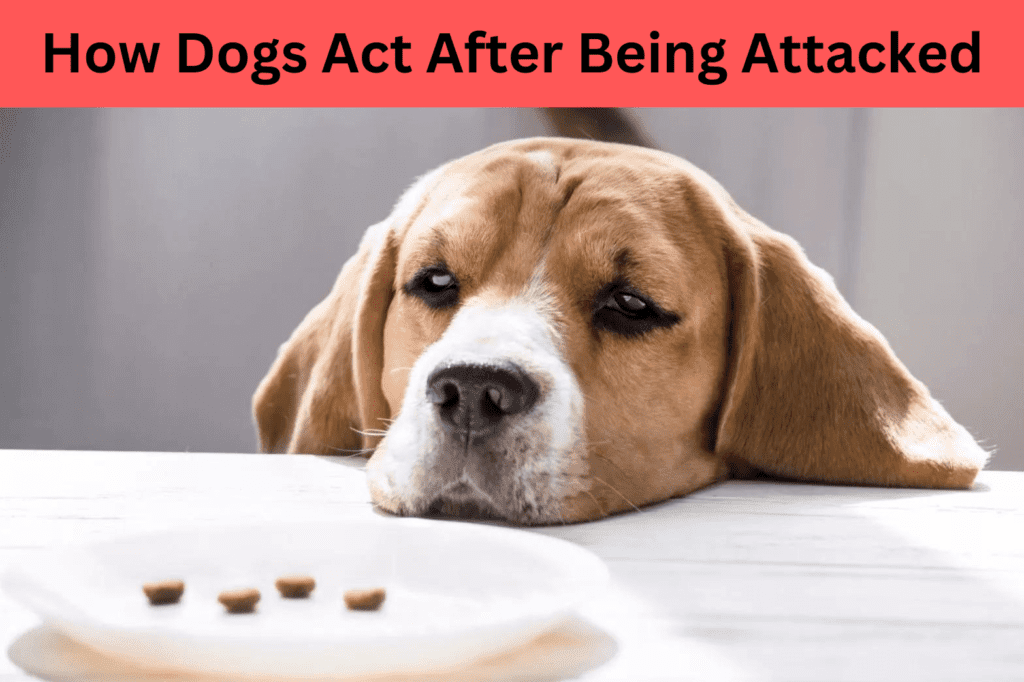
Conclusion
My dog was attacked and now won’t eat, it’s a very critical and painful situation for both dog and owner. A dog attack can be a very traumatic and stressful event for your dog and you. It can affect your dog’s physical and emotional health and cause a loss of appetite. If your dog is not eating after a dog attack, you should not panic or give up.
You should try to help your dog recover by offering it a bland diet, trying different foods and flavors, feeding it by hand or using a puzzle feeder, reducing stress and anxiety in your dog, and seeking professional help. With your love and support, your dog can regain its appetite and recover from the trauma.
Suggested: Dog Wet The Bed But Not Urine
Why Does My Cat Slap Me With His Paw?
FAQs about My dog was attacked and now won’t eat
Q: My dog was attacked and now won’t eat,?
- A: Your dog may not be eating after a dog attack due to stress, anxiety, fear, pain, or discomfort. Your dog may also have a loss of appetite due to medication side effects or underlying health conditions. You should monitor your dog’s food intake and consult your veterinarian as soon as possible.
Q: How can I increase my dog’s appetite after a dog attack?
- A: You can try to increase your dog’s appetite by offering a bland diet, trying different foods and flavors, feeding your dog by hand or using a puzzle feeder, reducing stress and anxiety in your dog, and seeking professional help.
Q: How long can a dog go without eating after a dog attack?
- A: A dog can go without eating for up to 48 hours, but this can vary depending on the dog’s size, age, and health. However, it is not advisable to let your dog go without eating for more than 24 hours, as this can lead to dehydration, weakness, and organ failure. You should seek veterinary care if your dog refuses to eat for more than a day.
Q: How can I help my dog recover from a dog attack?
- A: You can help your dog recover from a dog attack by providing physical and emotional comfort and security, following the veterinarian’s instructions and recommendations, monitoring your dog’s behavior and mood, avoiding exposing your dog to triggers or reminders of the attack, and gradually reintroducing your dog to normal activities and routines.
Q: How can I prevent my dog from being attacked by another dog?
- A: You can prevent your dog from being attacked by another dog by walking at times and places where there are other dog owners around, avoiding unknown or unsafe places, carrying a wearable camera or a phone with a camera, offering help to other dog owners even for minor attacks, calling out bad owner behavior, and using a sonic device or a bright light.

